
A photograph is an image created by light falling on a photosensitive surface, usually photographic film or an electronic image sensor, such as a CCD or a CMOS chip. Most photographs are now created using a smartphone/camera, which uses a lens to focus the scene's visible wavelengths of light into a reproduction of what the human eye would see. The process and practice of creating such images is called photography.

A Creative Commons (CC) license is one of several public copyright licenses that enable the free distribution of an otherwise copyrighted "work". A CC license is used when an author wants to give other people the right to share, use, and build upon a work that the author has created. CC provides an author flexibility and protects the people who use or redistribute an author's work from concerns of copyright infringement as long as they abide by the conditions that are specified in the license by which the author distributes the work.

Lenna is a standard test image used in the field of image processing since 1973. It is a picture of the Swedish model Lena Forsén, shot by photographer Dwight Hooker, cropped from the centerfold of the November 1972 issue of Playboy magazine. The continued use of the image has attracted controversy, on both technical and social grounds, and many journals have discouraged or banned its use. Forsén has asked for the image to be retired.
The bibliographical definition of an edition includes all copies of a book printed from substantially the same setting of type, including all minor typographical variants.
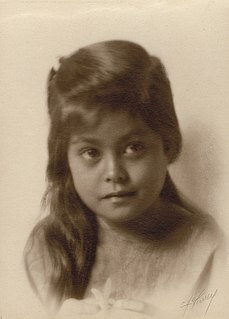
The gelatin silver process is the most commonly used chemical process in black-and-white photography, and is the fundamental chemical process for modern analog color photography. As such, films and printing papers available for analog photography rarely rely on any other chemical process to record an image. A suspension of silver salts in gelatin is coated onto a support such as glass, flexible plastic or film, baryta paper, or resin-coated paper. These light-sensitive materials are stable under normal keeping conditions and are able to be exposed and processed even many years after their manufacture. This was an improvement on the collodion wet-plate process dominant from the 1850s–1880s, which had to be exposed and developed immediately after coating.
The threshold of originality is a concept in copyright law that is used to assess whether a particular work can be copyrighted. It is used to distinguish works that are sufficiently original to warrant copyright protection from those that are not. In this context, "originality" refers to "coming from someone as the originator/author", rather than "never having occurred or existed before".
Copyright expiry in Australia depends on when a work was created, and on the type of work. Under the current law, copyright usually expires 70 years after the death of the author, or for anonymous works, 70 years from the date of publication. Crown copyright expires 50 years after publication. The law has evolved over the years, and previously photographs were treated differently from other works. Anonymous works and photographs created before 1955 are no longer under copyright. For non-photographic works created before 1955, where the author is known, the copyright expires 50 years after the death of the author.
In Germany, photo rights or "Bildrechte" are the copyrights that are attached to the "author" of the photograph and are specified in the "Law for Copyright and similar Protection". These rights deal with rights of reproduction, distribution, modification, attribution, and prohibitions against illegal modification or reproduction. The ownership rights of a picture are treated under the broader "art copyright laws". Furthermore, if a museum or gallery owns a work of art or a photograph, they are permitted to make their own stipulations as to the selling of illustrations and reproductions of their property. This relates to the German legal concept of the right of owner to undisturbed possession. Wolf Vostell said: "Copyrights are like human rights".
The American Society of Media Photographers, abbreviated ASMP, is a professional association of imaging professionals, including photojournalists, architectural, underwater, food/culinary and advertising photographers as well as video/film makers and other specialists. Its members are primarily those who create images for publications, though many cross over into wedding and portrait photography.

Film grain or granularity is the random optical texture of processed photographic film due to the presence of small particles of a metallic silver, or dye clouds, developed from silver halide that have received enough photons. While film grain is a function of such particles it is not the same thing as such. It is an optical effect, the magnitude of which depends on both the film stock and the definition at which it is observed. It can be objectionably noticeable in an over-enlarged film photograph.

A copyfraud is a false copyright claim by an individual or institution with respect to content that is in the public domain. Such claims are wrongful, at least under US and Australian copyright law, because material that is not copyrighted is free for all to use, modify and reproduce. Copyfraud also includes overreaching claims by publishers, museums and others, as where a legitimate copyright owner knowingly, or with constructive knowledge, claims rights beyond what the law allows.
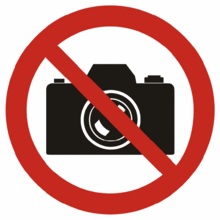
The intellectual property rights on photographs are protected in different jurisdictions by the laws governing copyright and moral rights. In some cases photography may be restricted by civil or criminal law. Publishing certain photographs can be restricted by privacy or other laws. Photography can be generally restricted in the interests of public morality and the protection of children.
Feist Publications, Inc., v. Rural Telephone Service Co., 499 U.S. 340 (1991), was a landmark decision by the Supreme Court of the United States establishing that information alone without a minimum of original creativity cannot be protected by copyright. In the case appealed, Feist had copied information from Rural's telephone listings to include in its own, after Rural had refused to license the information. Rural sued for copyright infringement. The Court ruled that information contained in Rural's phone directory was not copyrightable and that therefore no infringement existed.

The public domain (PD) consists of all the creative work to which no exclusive intellectual property rights apply. Those rights may have expired, been forfeited, expressly waived, or may be inapplicable. Because those rights have expired, anyone can legally use or reference those works without permission.
In the visual arts, texture is the perceived surface quality of a work of art. It is an element of two-dimensional and three-dimensional designs and is distinguished by its perceived visual and physical properties. Use of texture, along with other elements of design, can convey a variety of messages and emotions.
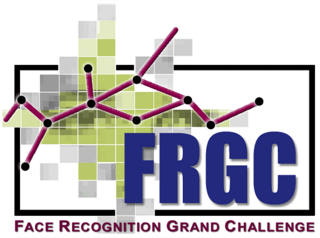
The Face Recognition Grand Challenge (FRGC) was conducted from May 2004 until March 2006 in an effort to promote and advance face recognition technology. It was the successor of the Face Recognition Vendor Test.
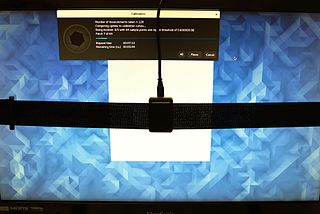
A tristimulus colorimeter, colloquially shortened to colorimeter, is used in digital imaging to profile and calibrate output devices. It takes a limited number of wideband spectral energy readings along the visible spectrum by using filtered photodetectors; e.g. silicon photodiodes.
Paper texture effects in calotype photography limit the ability of this early process to record low contrast details and textures. A calotype is a photographic negative produced on uncoated paper. An important feature is that a relatively short exposure in a camera produces a latent image that is subsequently made visible by development. Then positive images for viewing are obtained by contact printing. This technique was in use principally from 1840 into the 1850s, when it was displaced by photography on glass. Skilled photographers were able to achieve dramatic results with the calotype process, and the reason for its eclipse may not be evident from viewing reproductions of early work.
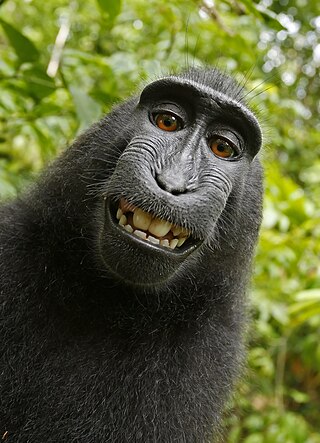
Between 2011 and 2018, a series of disputes took place about the copyright status of selfies taken by Celebes crested macaques using equipment belonging to the British nature photographer David Slater. The disputes involved Wikimedia Commons and the blog Techdirt, which have hosted the images following their publication in newspapers in July 2011 over Slater's objections that he holds the copyright, and PETA, who have argued that the macaque should be assigned the copyright.
Cultural property imaging is a necessary part of long term preservation of cultural heritage. While the physical conditions of objects will change over time, imaging serves as a way to document and represent heritage in a moment in time of the life of the item. Different methods of imaging produce results that are applicable in various circumstances. Not every method is appropriate for every object, and not every object needs to be imaged by multiple methods. In addition to preservation and conservation related concerns, imaging can also serve to enhance research and study of cultural heritage.










